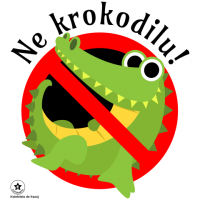Mesaĝoj: 13
Lingvo: English
sudanglo (Montri la profilon) 2018-januaro-17 11:51:59
So in a sense the world had at that time an international currency, namely gold, and any of the circulating gold coins at that time could have been considered to be effectively an international currency.
The Spesmilo (1907), the Esperantist money, was also defined in terms of gold. In fact the definition of the Spesmilo, in gold equivalent, was such that 10 Spesmiloj equalled 1 British gold sovereign (the premier circulating gold coin).
So how much was a Speso?
Well this was one tenth of a sovereign (£1) - so equal to 2 shillings or 24 old pennies. Thus 1 speso = 24/1000 old pennies or .024d (roughly 10 spesoj equalled 1 farthing).
This may seem an absurdly small unit, but remember that pre-World War I, a pint of beer was only 3d (3 old pennies). So a pint of beer would have cost 125 Spesoj.
How does this compare to today?
The gold content of a sovereign (they are still being issued by the Royal Mint) is roughly £230, which makes a Spesmilo £23, and a Speso 2.3 pence.
Taking the current cost of a pint of beer at £3, the cost of a pint of beer now is 130 Spesoj – not so very different.
Might it not therefore be a good thing to resurrect the Spesmilo?
MiMalamasLaAnglan (Montri la profilon) 2018-januaro-24 23:04:13
sudanglo (Montri la profilon) 2018-januaro-26 09:55:10
Can you say what the value of the Stelo is today?
The recent appearance of a 100 Stelo coin of one ounce of .999 silver might suggest that whoever organised the minting of the same would like the Stelo now to be silver-based. But this is not confirmed by anything I have read, and in any case I doubt that you can you buy these silver coins at anything like their precious metal content valuation?
A troy ounce of silver is around £12 (which would make the Stelo worth 12 pence).
Whilst it is true that historically some countries adopted a Silver standard, it was much more common for currencies to be defined in terms of gold. According to one source, 59 countries were on the Gold standard at the time of the outbreak of WW1. And the use of gold as money can be traced back thousands of years.
Being on the Gold standard means that it is a very simple matter to work out the value of your currency in terms of another.
sudanglo (Montri la profilon) 2018-januaro-26 10:57:34
The currency issuer would issue its notes and coins in Spesmiloj, Spescentoj, Spesdekoj etc at an overall value equal to its holding in Gold - never more.
Therefore any Esperantist holding a certain sum in Spesoj could be confident that it was matched in full at the currency issuer by an equivalent in gold.
And to keep the currency issuer to its remit, the Speso should always in principle be redeemable in gold. In practice, of course, it would be necessary to limit the redeemability to discrete sums corresponding to the gold content of a whole number of what ever gold coins or bullion bars it was holding.
Further to maintain confidence in the Speso, the currency issuer should regularly publish its audited balance sheet in the Esperanto press.
It would be of a form like this
Assets: gold coin (denominations and quantities); bullion bars (weight) - value in Spesmiloj
Liabilities: notes and coin issued - value in Spesmiloj
The Currency Issuer could be any organisation that the Esperantist have confidence in.
Existing stocks of Steloj could be used initially as Spesmilo equivalents provided that a suitable exchange rate can be agreed and that they were in principle redeemable. Perhaps 100 Steloj = 1 Spesmilo.
calsioro (Montri la profilon) 2018-marto-21 00:57:14
https://en.wikipedia.org/wiki/Monero_(cryptocurren...
Roch (Montri la profilon) 2018-marto-21 04:58:48
Monero was originally launched by a Bitcointalk forum user only known as "thankful_for_today" under the name BitMonero which is a compound of Bit (as in Bitcoin) and Monero (literally meaning "coin" in Esperanto).[4] Five days later, the currency's supporters opted for the name to be shortened to Monero.[7]I see your point...

calsioro (Montri la profilon) 2018-marto-22 01:10:24
http://vortaro.net/#bito
➁ bit/oBut yeah, i was jk
1 ∆ Mezurunuo de informacio egala al la kvanto, kiu ebligas elekton inter du eblaĵoj, k tial prezentebla per unu duuma cifero.

sudanglo (Montri la profilon) 2018-marto-25 10:45:19
The basis of any conversion is going to be the price of a troy ounce of gold, or its price per gram, (as quoted in the newspapers or found by a Net search), and the price of these weights of gold in Spesmiloj.
An ounce of gold is always 31.105/0.7322 = 42.48 Spesmiloj.
A gram of gold is always 1/0.7322 = 1.3657 Spesmiloj.
To go to price in Spesmiloj : (42.48 * price in local currency)/ Price(au-oz)
or (1.3657 * price in local currency)/Price(au -gm)
For example:
suppose gold is at 1080 Euro's per ounce and an item costs 25 Euro's,
Spesmilo price is 42.46* 25/1080 = 0.98Sm.
Suppose gold is at 35 Euro's per gram and an item costs 25 Euro's
Spesmilo price = 1.3657* 25/35 = 0.975 Sm
Metsis (Montri la profilon) 2019-januaro-16 11:53:23
Sorry for taking up this old thread and being a nitpicker
 but I stumbled on this and I think you have made a rounding error in your calculation, what a gram of gold is in spesmiloj.
but I stumbled on this and I think you have made a rounding error in your calculation, what a gram of gold is in spesmiloj. IIUC your formula goes this way:
- Count the amount of pure gold (fineness 1000) in a coin.
Let fineness be f and weight of the coin w, then the gold content c = (f /1000) ✕ w. - Calculate what would weight a coin with the c amount of gold in fineness 916.
Let w₉₁₆= (1000/916) ✕ c. - Count the value in spesmiloj using the rule, that 0,8 g of gold (fineness 916) equals 1 ₷.
Let v= (1/0,8) ✕ w₉₁₆.
What you have to do, is put these steps together
v = ((f /1000) ✕ w) ✕ (1000/916) ✕ (1/0,8)
<=> v = (f /1000) ✕ (1000/916) ✕ (10/8) ✕ w
<=> v = (f /916) ✕ (10/8) ✕ w
and use a scientific calculator like
https://keisan.casio.com/calculator
in advanced mode to get value. I calculated v for 1 g of gold of fineness with the default 22 decimals and got
1,364628820960698689956
The usual convention for currency calculations is to have one more decimal in the end result than what is the smallest nomination. Since 1 ₷ = 1000 spesoj, i.e. three decimals, the calculated sum should be expressed with four decimals with the standard rounding rule applied. Thus
1 g of gold of fineness 1000 is always 1,3646 spesmiloj.
sudanglo (Montri la profilon) 2019-januaro-18 11:35:16
Anyway however you swing it neither a troy ounce nor a gram of gold convert to whole (or easily roundable to whole) amounts in Spesmiloj.
Of course, de Saussure wouldn't have been concerned with that. What his definition did was to make the leading (gold backed) currencies of his time into easy figures in Spesmiloj.
Thus a pound became 10 Spesmiloj, 10 francs 4 Spesmiloj, and 1 US dollar 2 Spesmiloj.
Strictly his definition doesn't produce these exact conversions, but they are very close.




